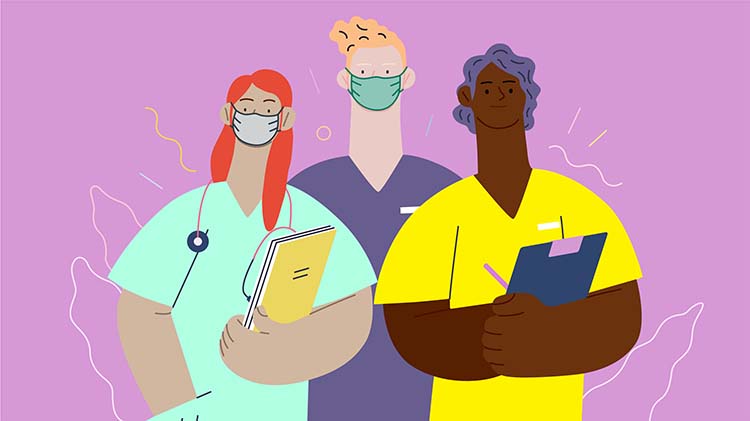Working Together to Make Good Healthcare Choices
11 Mar 2015

Shared decision making (SDM) is fundamental to the informed consent process and can provide a framework for improved informed consent conversations. A SDM consultation (outlined below) involves both the doctor and patient participating in making a health decision after discussing the treatment options, their benefits and risks, and the “patient’s values, preferences and circumstances”.1
1. Form good relationships by demonstrating a welcoming and caring attitude
This is the key to achieving SDM. It will help patients feel supported in sharing information and expressing their preferences and views.3
2. Introduce SDM
A SDM consult may be different from what patients are used to or comfortable with.4 To reduce any discomfort, it can help to:
- briefly explain the style of the consultation1
- emphasise it’s a “shared” process1
- highlight that their personal knowledge and preferences are as important as medical expertise.4
3. Describe treatment options
Listing options provides a good structure for the conversation.3 From there you can:
- check what the patient already knows and whether it’s correct3
- give information in “chunks” where one important message is one “chunk” of information; and check understanding before moving on to the next section of information3
- discuss uncertainty of treatment outcomes and the benefits and risks of each option
- summarise by listing the options again and checking understanding using the “teach back” method, i.e. patients are encouraged to repeat what they’ve taken from the discussion.5
Remember to take the time to ensure what you talked about has been understood. Be flexible towards adapting communication to each person and use simple, plain language free from medical jargon. If someone doesn’t understand something, communicate the information in a different way.
4. Help patients explore their preferences towards making a decision
In the final step you can:3
- elicit their reactions to options and information
- encourage them to form preferences based on the information, their values and circumstances, e.g. “What, from your point of view, matters most to you?”
- check if they are ready to make a decision or require more time or additional information.
What if the patient asks you to decide what they should do? A doctor cannot make the decision for their patient. Useful phrases when responding include:
- “What I would do is because of who I am, and not everybody is the same.”2
- “I’m happy to share my views and help you get to a good decision. But before I do so, may I describe the options in more detail so that you understand what is at stake?”3
People are entitled to make their own decisions about their health care. Patients who are supported to truly actively participate in selecting their treatment are more likely to make decisions that are best for them. They are also likely to have improved understanding of the chosen treatment and its risks which helps to avoid discrepancy between expectations and outcomes.1
SDM can result in a better informed, more empowered patient who takes more responsibility for their decision and is consequently less likely to have a negative reaction towards the doctor if what was warned actually occurs.
Gemma Brudenell
MDA National Education Services
1. Hoffmann T, Legare F, Simmons M, McNamara K, McCaffery K, Trevena L, et al. Shared Decision Making: What Do Clinicians Need to Know and Why Should They Bother? Med J Aust 2014;201(1):35–9. Available at: mja.com.au/journal/2014/201/1/shared-decision-making-what-do-clinicians-need-know-and-why-should-they-bother.
2. Colyer S. Doctors Care But Do They Share? MJA Insight 2014(7 July). Available at: mja.com.au/insight/2014/24/doctors-care-do-they-share.
3. Elwyn G, Frosch D, Thomson R, Joseph-Williams N, Lloyd A, Kinnersley P, et al. Shared Decision Making: A Model for Clinical Practice. J Gen Intern Med 2012;27(10):1361–7. Available at: ncbi.nlm.nih.gov/pmc/articles/PMC3445676/.
4. Joseph-Williams N, Edwards A, Elwyn G. Power Imbalance Prevents Shared Decision Making. BMJ 2014;348. Available at: bmj.com/content/348/bmj.g3178.long.
5. Mulsow J, Feeley M, Tierney S. Beyond Consent – Improving Understanding in Surgical Patients. Am J Surg 2012;203(1):112–20.
Professional boundaries in healthcare - Part 1
Boundaries with patients present in numerous ways every day and all health practitioners
11 Aug 2025
Understanding Professional Medical Indemnity Insurance
Do you understand the ins and outs of professional medical indemnity insurance?
11 Aug 2025
Professional boundaries in healthcare - Part 2
Boundaries with patients present in numerous ways every day and all health practitioners
11 Aug 2025
Understanding changes to the Fair Work Act
What are the changes to the Fair Work Act and what is my role?
22 Jul 2025






